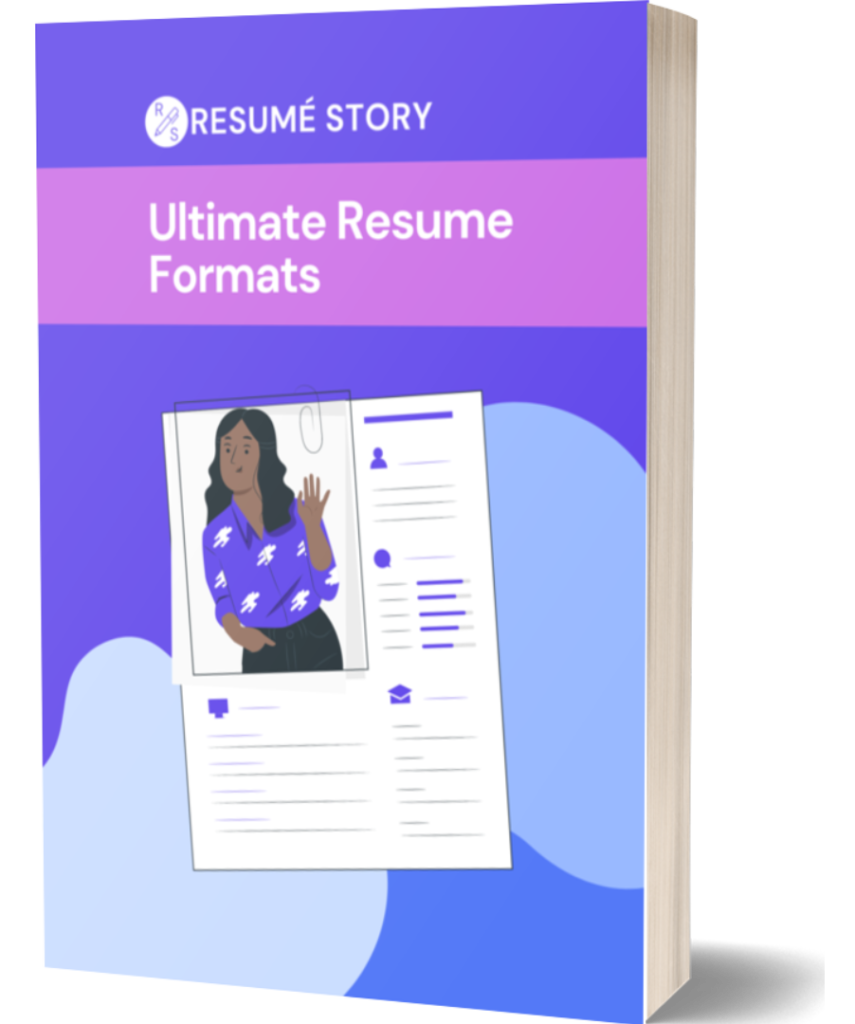10 tips to write Work Experience on a Resume – 2024

Table of Contents
Importance of Work Experience Section
Having a strong work experience section on your resume is crucial for showcasing your qualifications to potential recruiter. There are several reasons why this section is the most important part of your resume format, particularly for job seekers looking to list work experience clearly.
- Demonstrates relevant skills: Your work experience section highlights the skills and abilities you have acquired through previous employment, showing recruiting manager that you have the necessary qualifications for the job.
- Validates your accomplishments: Listing your achievements at previous jobs helps to provide concrete evidence of your capabilities and successes in the workplace.
- Shows career progression: Employers are interested in seeing how you have advanced in your career and the trajectory of your professional development.
- Builds credibility: A strong professional experience section adds credibility to your resume and gives hireres confidence in your ability to excel in the position.
- 5. Sets you apart from other candidates: In a competitive job market, a robust work experience section can help you stand out from other applicants and increase your chances of securing an interview.
Work experience on a resume should be in reverse chronological order
To list your work experience on a resume, the most recommended approach is to list it in reverse chronological order. This method involves starting with your most recent job at the top of the section and working backwards through your history of employment. This str
When crafting a resume, the arrangement of professional experience is pivotal for making a compelling impression on potential hiring manager. The most widely acknowledged and effective format is listing experiences in reverse chronological order. This method showcases an individual’s career trajectory by presenting their most recent job position first, then moving backwards through their employment history. This layout is preferred because it easily highlights the applicant’s progression, including any advancements or increased responsibilities in their field. It makes it straightforward for hiring managers to assess the candidate’s career growth and relevance to the position being applied for.
Moreover, organizing work experience in this way aligns well with the expectations of recruiters, who often spend merely a few seconds glancing over a resume format. Seeing the most current position at the top allows them to quickly understand the candidate’s present capabilities and how they have evolved professionally over time. Additionally, this format assists in emphasizing any prestigious companies, high-level positions, or significant achievements early on in the resume. This potentially captures the recruiter’s interest from the outset. Therefore, adhering to this structure not only makes the resume work experience more readable but also strategically positions the candidate’s background in the best possible light to capture the attention of prospective recruiter.
Include all your previous employers
In constructing a comprehensive and compelling resume, it is crucial to include all your previous organizations in the work experience section. This approach not only showcases the breadth and depth of your professional journey but also provides potential hiring HR with a transparent and chronological overview of your career progression. Include every past company, regardless of the duration or the role’s relevancy to the position you’re applying for. This offers a complete picture and can highlight your adaptability, resilience, and the richness of your experiences. Moreover, this comprehensive inclusion eliminates any gaps in your employment history, which can often raise questions or concerns from prospective recruiters.
Furthermore, mentioning all your previous employers can inadvertently reveal skills and experiences that might be pertinent in unexpected ways. The diversity in roles and industries can underscore your versatility and ability to thrive in varied environments. It is essential, however, to tailor the description of each role to align with the job you are applying for. Focus on achievements and responsibilities that demonstrate transferable skills and direct contributions to organizational goals. By doing so, you transform a mere listing of past companies into a powerful narrative of your professional evolution and potential future impact.
Mention your job location and dates of employment
When crafting your resume, your work experience section is crucial for showcasing your career trajectory and skills. It is advisable to clearly mention both your job location and the dates of employment for each position you’ve held.
Starting with the most recent position, write the name of the company, your job title, and then the city or precise location followed by the state or country. Adjacent to or below this information, specify the duration of your employment, mentioning both the start and end month and year.
This format not only offers a clear timeline of your professional journey but also provides prospective hiring managers with essential information at a glance, facilitating a better understanding of your geographical and temporal career path.
Job title format should be simple and adhere to industry standards
When crafting your resume format, it’s essential to ensure that the job titles in the professional experience section of your resume are both simple and conform to industry standards. This approach not only enhances readability but also aligns your application with the expectations of recruiters, who may be scanning through hundreds of resumes. Choosing the right resume template can guide you in presenting this information in the most effective way, ensuring that your job titles clearly communicate your roles and responsibilities without causing confusion or appearing overly complicated. Adhering to these principles can significantly improve the impact of your resume by making it easy for hiring managers to quickly understand your professional background.
Mention your promotions
When detailing your work history on a resume, it’s crucial to highlight your upward mobility within companies. Detailing your promotions adequately within the experience section of your jobs would serve as evidence of skill, dedication, and the value you bring to the organizations in which you have worked before. You should, for example, structure your roles and responsibilities in such a way that they do not flow successively from one post to the other. Starting with the most recent title, write the respective periods in which you were serving the initial position to show the timeline of promotions. It clearly shows the hiring manager that this candidate was appreciated for his efforts and that over time, he obtained higher responsibilities. Further bullet pointing the achievements in each role could give proof of being promoted and how one added value to the job at different levels of promotion during the course of a career. It’s such details that make a difference in setting you apart from the rest of the crowd.
List your awards and recognitions in your work history
Awards and recognitions in your work history are crucial for several reasons. First, they provide concrete evidence of your capabilities and success, which can set you apart from other candidates in a competitive job market. By showcasing your accolades, you also demonstrate your commitment to excellence and continuous improvement, an attribute highly valued in any profession. Lastly, such recognitions can reinforce your value proposition to potential recruiters or clients, providing a compelling reason to choose you over others.
Including awards in your work history not only enhances your resume or LinkedIn profile but also fuels your professional narrative, allowing you to project a strong image of success and reliability. Whether it’s a recognition for surpassing sales targets, a certificate of excellence in customer service, or an award for innovation and leadership, each accolade serves as a building block in constructing a compelling career story.
Template to explain a gap in your work experience on your resume
When addressing a gap year in your job experience on a resume, it’s crucial to frame it positively and honestly. Firstly, consider focusing on personal development during the gap. This can involve mentioning any new skills you acquired, courses you undertook, or personal projects you embarked on that have relevance to the job you’re applying for. Highlighting personal growth shows proactivity and a willingness to improve yourself, which is attractive to employers. Secondly, if the gap was due to voluntary work or travel, make sure to discuss the transferable skills you gained during this time. Skills such as leadership, communication, and adaptability are valuable in any role and showcasing them can help compensate for the gap. Lastly, if the break in employment was for health reasons or care responsibilities, it’s sufficient to mention this briefly and focus on your eagerness and readiness to return to work. Employers appreciate transparency, but they also value your ability to overcome challenges and your determination to move forward in your career.
How many bullet points to write in work experience on your resume
When considering how many bullet points to include in the work experience section of your resume, it’s important to understand that the total number can vary widely. Generally, the overall count for a resume can range between 45-60 bullet points. This spread allows for a detailed view of your professional journey, without overwhelming the reader with information overload.
However, when it comes to allocating these bullet points across different roles, a strategic approach is necessary. It’s advisable to dedicate more bullet points to your most recent work history. This is because your latest role is likely most reflective of your current skills and competencies. Similarly, roles that are more relevant to the position you are applying for should also be highlighted with more bullet points. This targeted strategy ensures that your resume is not just a list of tasks but a compelling narrative of your professional evolution and relevance.
Tailor your work experience to the job you are applying for
When you go out on such a job application journey, one of the key tips is tailoring your work history to fit the job that you are aiming at. It’s not just about listing every job you ever had; rather, it’s showing off experiences and skills that are close matches to the job description. Not only will this demonstrate to potential employers that you took the time to understand specifically what it is that they are looking for in an employee, but it will also reveal to them that you possess the very expertise the job requires. Carefully analyze the main duties and required skills in the job posting. Then, reflect on your past roles and select those experiences that best match the criteria.
You should use your resume and cover letter to articulate projects, tasks, and achievements that speak to your ability to succeed in the new job. Make it vivid, give specifics, and tell a quantified story of achievements. If, for example, the position is looking at project management skills, mention a project you steered to completion; state its scope and the actions you took in order to have good results. Get your application to strategically befit you not only to stand out for an employer but also to increase your chances for the invite for an interview dramatically. After all, the idea is to vividly show, with proof, how your background makes you the perfect job candidate.
Don’t just describe work experience like a job description
When detailing your relevant experience on a resume or during an interview, it’s crucial not to merely replicate a job description. This approach fails to highlight your unique contributions and accomplishments in those positions. This makes it difficult for potential employers to gauge your impact. Instead, focusing on specific outcomes or projects you were involved in demonstrates your ability to deliver results and contribute meaningfully. This leads to the second point: detailing your experience beyond a list of duties allows you to showcase your problem-solving skills. Also how you can tackle challenges, is a key aspect employers look for in candidates.
Thirdly, by moving beyond a job description narrative, you have the opportunity to reflect on and articulate your professional growth and learning throughout each role. This can significantly impress employers by illustrating your self-awareness and dedication to development. Fourth, it enables you to tailor your narrative to align with the job you’re applying for, emphasizing the experience and skills most relevant to the position. Lastly, it provides a platform to engage the reader by telling a compelling story about your career journey, rather than just providing a bland checklist of tasks. This storytelling approach can significantly enhance your application, making you a memorable candidate.
How to write a bullet point (with work experience examples)
When crafting the work experience section of your resume, utilizing bullet points effectively can highlight your accomplishments and skills. To create an impactful bullet, always start with an action verb. This immediately sets a dynamic tone, indicating your proactive nature. For instance, instead of saying “Responsible for managing a team,” begin with “Managed a 10-person team.” This direct approach captures attention. Next, it’s critical to show the impact you have made. Quantify your achievements, if possible, to provide a clear picture of your contributions. For example, “Increased sales by 20% within the first quarter.”
To further solidify your bullet point, explain how you did it and the method you used. This adds depth to your accomplishment, giving the employer a glimpse into your problem-solving process. Crafting a bullet such as, “Implemented a new sales strategy focusing on inbound marketing, resulting in a 20% increase in sales,” offers insights into your strategic thinking. Always mention the skill that you used, as this illustrates your capabilities and how they apply to real-world scenarios. Finally, set the context of the situation to provide background. Highlighting the challenges or the environment you navigated through, like a high-stakes project or a turnaround situation, adds weight to your achievement. Structuring your bullet points in this manner not only showcases your results but also your approach and adaptability.
Resume Story’s Resume Pro will help you craft your perfect work experience section
FAQs
Q: How do I list my work experience on a resume for maximum impact?
A: To maximize impact, start with your most recent job and work backwards. Use bullet points to describe your job responsibilities and achievements. Quantify your accomplishments with numbers wherever possible. This makes your contributions tangible to recruiters. Make sure the work experience is related to the job opening you’re applying for to match the job ad’s keywords.
Q: What resume format should I use to highlight my work experience?
A: Choose a resume format that best showcases your work experience. A chronological resume format is ideal if you have a strong work history in your field. For those with gaps in their work history, a functional resume format may be more effective.
Q: Can I include volunteer work in my resume work experience section?
A: Absolutely. Including volunteer work in your resume work experience section can be a great way to fill in gaps in employment. It also demonstrates relevant skills and dedication, especially if you have limited formal work experience. Make sure it’s relevant to the job you’re applying for and clearly label it as volunteer work.
Q: How can I make my resume with no work experience stand out?
A: Focus on showcasing your skills, academic achievements, volunteer work, and extra-curricular activities. Use the resume sections creatively to highlight projects or roles that demonstrate transferable skills related to the job. Entry-level resume examples may show how to optimize your resume without traditional work experience.
Q: What are the key takeaways for writing a perfect resume work experience section?
A: The key takeaways for crafting a perfect resume work experience section include:
- using reverse-chronological order,quantifying accomplishments,
- tailoring the content to the job you’re applying for,
- incorporating relevant keywords from the job ad,
and including both paid and volunteer positions if they enhance your candidacy.
Q: How do I describe my work experience if I’m targeting a career change?
A: When targeting a career change, focus on transferable skills and achievements that are relevant to the new field. Use a combination resume format to emphasize these skills while still providing a chronological view of your work history. Highlight how your past work experience and skills are applicable to the new job.
Q: What common mistakes should I avoid in the resume work history section?
A: Common mistakes
- avoid include listing duties without explaining the achievements,
- failing to tailor the section to the job you’re applying for,
- omitting quantifiable results, and including irrelevant work experience.
Also, ensure there are no gaps in your employment history without explanation.
Q: How can I quantify my accomplishments in the work experience section?
A: Quantify your accomplishments by including specific numbers, such as sales targets achieved. Examples – the percentage increase in productivity, or the number of team members you managed. This provides concrete evidence of your abilities and makes your resume more compelling.
Q: Should I also include part-time jobs in my resume work experience section?
A: Yes, part-time jobs should be included in your resume work experience section. Especially if they demonstrate skills or achievements relevant to the job you’re applying for. Make sure to clarify that it was a part-time role. Focus on the responsibilities and accomplishments just as you would with full-time positions.
Q: How can I organize my work experience on a resume effectively?
A: To organize your work experience effectively, use reverse chronological order to list your positions, starting with the most recent. For each position, include the company name, your job title, dates of employment. Bullet points highlighting your key responsibilities and achievements. Tailor this content to match the job for which you’re applying, emphasizing the most relevant experiences.
Categories
- Freshers (1)
- Interview Prep (2)
- Linkedin (1)
- Resume Writing (9)
- Technical Interviews (1)
- Uncategorized (2)
If you like what you see, please share!
Receive more such content in mail
Popular Posts
-
5 Best Online Resume Builder for 2024
March 23, 2024 Resume Writing -
Understanding the Full Form of CV
March 23, 2024 Resume Writing
Pricing Plans
Choose the best plan for yourself
Review your current resume
per report
- ATS compatibility
- Skill Analysis
- Content Structure
- Resume Structure
- Language Analysis
- 30 min 1-on-1 session
- Skill mapping for dream job
- Resume re-writing
- 3 mock interviews
Professional Resume Writing
3 revisions
- ATS compatibility
- Skill Analysis
- Content Structure
- Resume Structure
- Language Analysis
- 30 min 1-on-1 session
- Skill mapping for dream job
- Resume re-writing
- 3 mock interview
Mock Interview Practise
3 hour sessions
- ATS compatibility
- Skill Analysis
- Content Structure
- Resume Structure
- Language Analysis
- 30 min 1-on-1 session
- Skill mapping for dream job
- Resume re-writing
- 3 mock interviews









